Coffee is a kind of beverage that comes from processing and extraction of the coffee seeds. The word coffee is derived from the Arabic Qahwah which means strength, because the coffee was initially used as a high-energy food. Qahwah said again been changed into Kahveh derived from the Turkish language and then changed again into Koffie in Dutch. The use of the word Koffie immediately absorbed into Indonesian coffee known to be said at this time.
cofe espresso
Learn to make perfect espresso coffee
Espresso coffee is an Italian invention that uses a pump-driven machine to force near-boiling water through finely ground coffee to extract its full flavour. For best results, the water is forced through with at least 15 bars of pump pressure for 20 to 30 seconds (nominally 25 seconds) to produce 30 ml of liquid. The resulting "shot" of liquid is thick and strong, and contains a dark oily layer on top known as the crema. Espresso coffee drunk "as is" is often referred to as a short black. Hot frothed milk can also be added to an espresso shot in various proportions to make other popular café style coffee drinks including macchiato, cappuccino, flat white, and latte.
To make coffee house quality espresso coffee at home, you'll need to by a good quality domestic espresso machine. These start from a couple of hundred dollars and up. It's not necessary to get one with fancy features. So long as it produces at least 15 bars of pump pressure, the overall quality of the coffee will be the same. Do not buy the cheap ones that operate from steam pressure rather than using a pump to force the water through the coffee as these machines don't make a proper espresso shot.
Type of coffee
The perfect espresso coffee is made from freshly-ground roasted coffee beans. This means you'll also need to invest in a good quality grinder and use whole beans. Alternatively, you can buy ready ground coffee. Ground coffee should be stored in an airtight container and refrigerated. Coffee stored in this way will last up to a few weeks but the flavour will slowly deteriorate.
The coffee beans should be finely and evenly ground to make a good espresso coffee. However, if it's too fine it will clog the filter and won't produce 30 ml of coffee in the requisite 25 seconds. If the coffee is too course the water will pour through too quickly, overfilling the cup, and won't produce a decent crema. You cannot use instant coffee with an espresso machine.
The water
It’s also important to start with fresh clean water. Water that has a stale or plastic taste will affect the flavour of the coffee. This also goes for the coffee making equipment. Make sure the filter, filter holder and group are clean and free of old coffee residue.
Making the coffee
Making the perfect espresso coffee at home takes a lot of initial experimentation as there are many variables that can affect the process including the type of coffee, the grind, and how tightly and evenly the coffee is packed into the filter. The general procedure for making an espresso coffee is outlined below:
» Turn on the espresso machine and allow it to preheat. Make sure it has an adequate supply of fresh cold water.
» Preheat the coffee cups, filter, and filter holder.
» Grind the coffee if using whole beans.
» Place the filter inside the filter holder and add one scoop of coffee (about 7 grams).
» Level the coffee flat with your finger. Now lightly press on the coffee with the tamper. Remove the tamper and allow any grinds on the side to fall back on top of the coffee. Tamp again with a little more pressure while slowly rotating the tamper so that the coffee is evenly packed with a smooth finish.
» Tightly lock the filter handle into the machine and quickly place a warm cup under it.
» Set the machine to force the water through the coffee for 25 seconds (the machine should automatically control the temperature of the water to just below boiling point). The coffee should drip out slowly, appear reddish brown in colour, and produce 30 ml of coffee with a thick crema.
» Stop the water flow (if the machine is manually controlled) and drink the coffee immediately.
To make a long black, simply add hot water to the espresso shot.
Troubleshooting
Some general troubleshooting tips are given below:
Symptom Possible causes
More than 30 ml of coffee in the cup.
Grind is too course
Insufficient coffee used
Coffee not packed tightly or evenly enough
Extraction time too long
Less than 30 ml of coffee in the cup.
Grind is too fine
Too much coffee used
Coffee packed too tightly
Extraction time too short
Crema is too thin or light in colour.
Grind is too course
Grind not even (grains not the same size)
Insufficient coffee used
Coffee not packed tightly or evenly enough
Machine not warmed up
Coffee tastes bitter.
Extraction time too long
Coffee type - try another brand
Frothing milk
Most espresso machines will also produce steam for heating and frothing milk. If your machine is an inexpensive type, draw the espresso shot first before switching to the steamer mode. Place a small saucer over the espresso shot to keep it warm while you froth the milk. When the steamer is ready, expel a little steam first to remove any water. Then position the steam nozzle to the bottom of a jug of cold milk and open the steam valve. Slowly lower the jug to draw the nozzle closer to the surface of the milk so that it can draw in a little air. If you position it right, a whirlpool motion will be happening in the milk and you will get an even mix of bubbles throughout. The frothed milk should be about 70-75° C. Do not scorch the milk or allow it to boil! Turn off the steamer and prime the unit if necessary for your machine. Bang the milk jug down on a flat surface to break up any large bubbles, and swirl the jug around a few times (or mix the frothed milk with a spoon).
Add the milk slowly to the espresso shot to make the desired coffee drink in the appropriate cup or glass. To make a macchiato, simply "stain" the coffee with a little of the frothed milk. Flat white and latte coffees contain about two thirds frothed milk. Cappuccino is made like a flat white but contains additional froth on top and a sprinkle of powdered drinking chocolate.



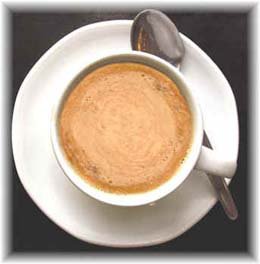




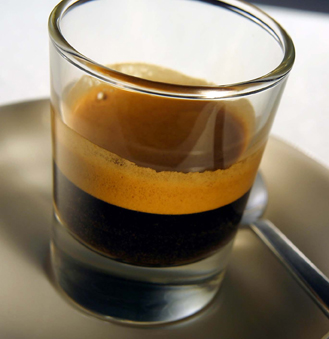






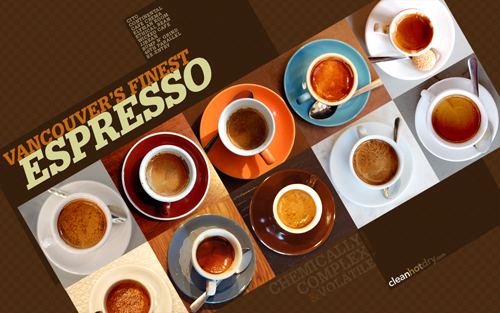
American roast: They are the most regular type of roast today; the beans are being roasted in medium level. Resulting in medium flavor, not too light or too heavy. They also divided into many different regions and result in also different taste of coffee.
Brazilian coffees: grown in lowland the quality then isn’t consider to be as good as those grown on high land. Brazilian are well known for being the largest producer for coffee.
Jamaican Coffee: The coffee from Jamaican are bitter, they have the most well known world’s most expensive coffee named Blue Mountains. It is very smooth, sweet and aromatic.
Costa Rica coffee: it is very famous in Europe. A fruity flavor coffee, well known for drinking with breakfast.

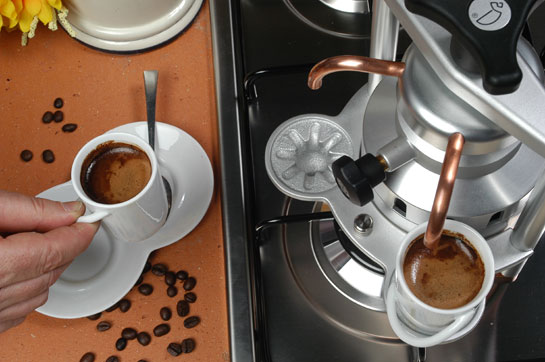
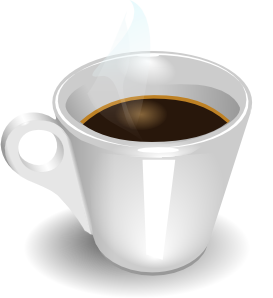





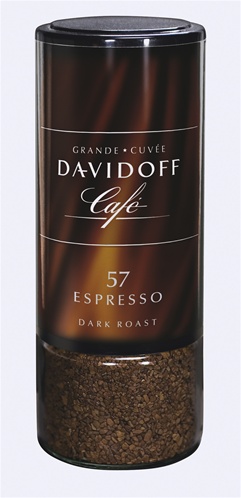




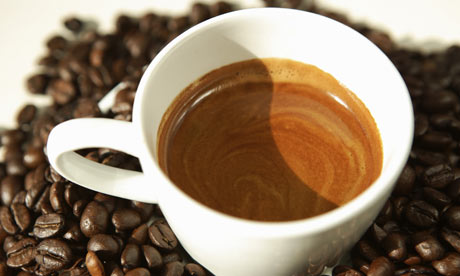



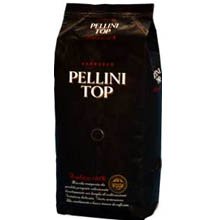













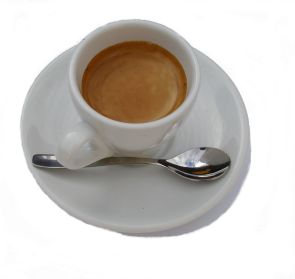
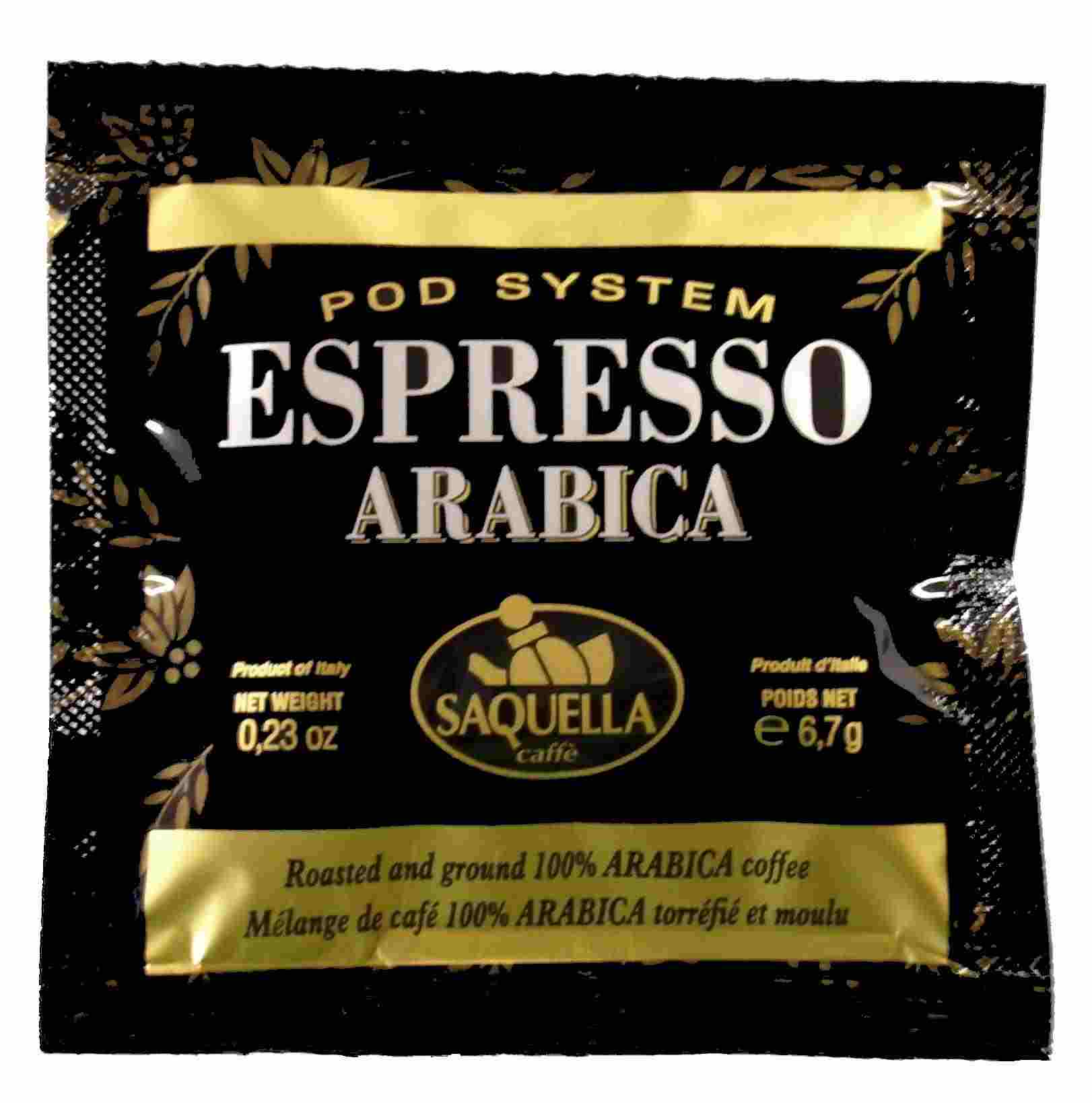
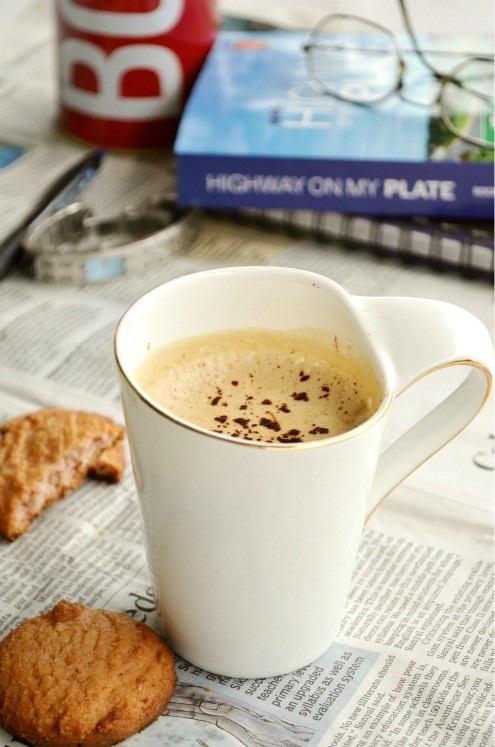

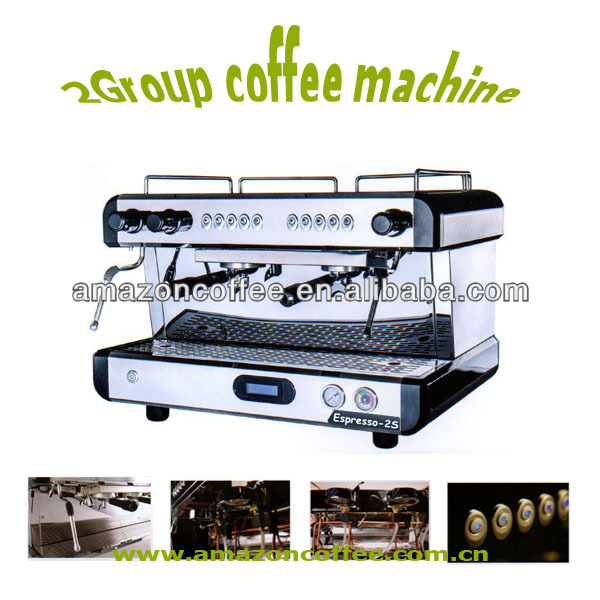









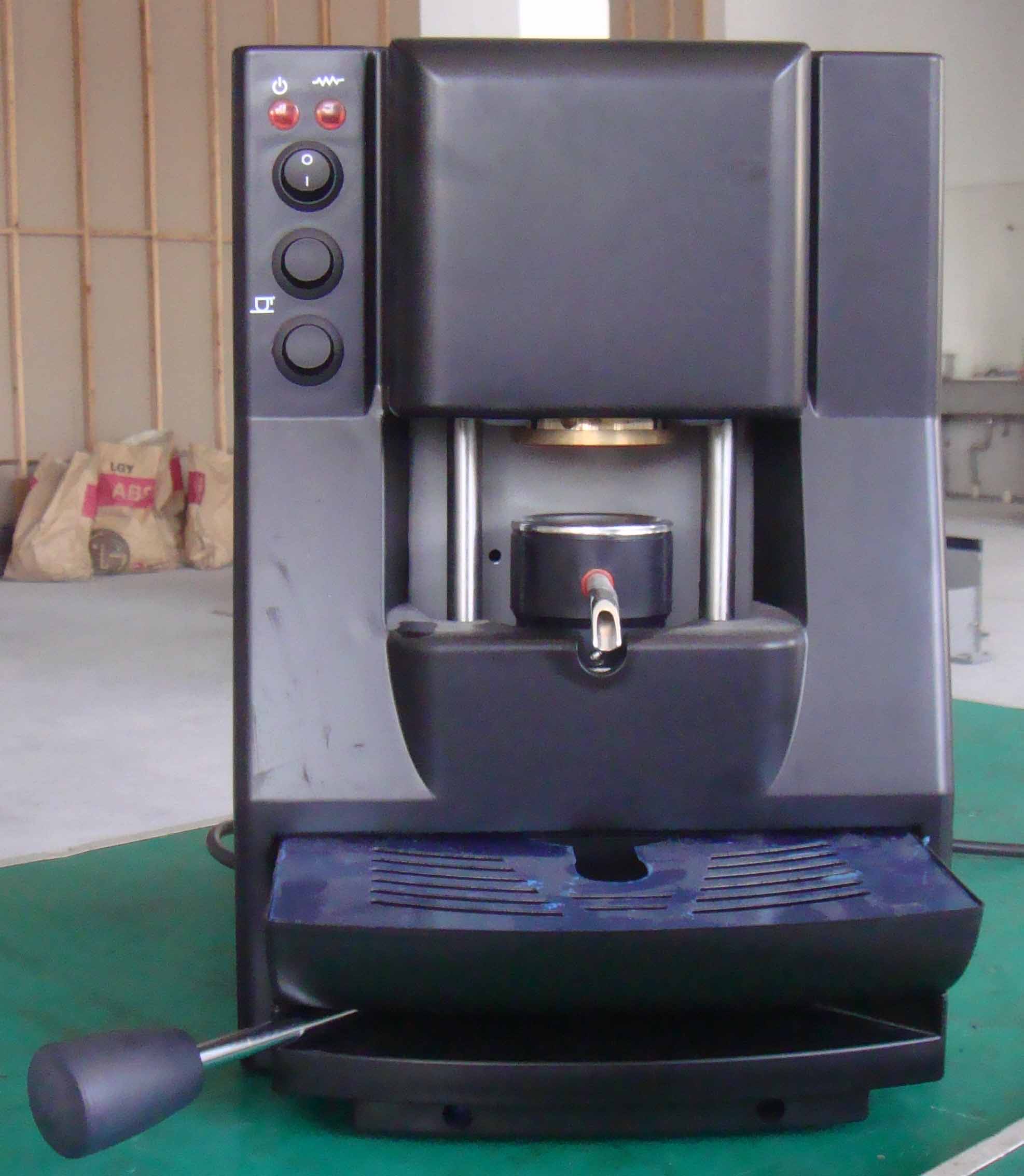


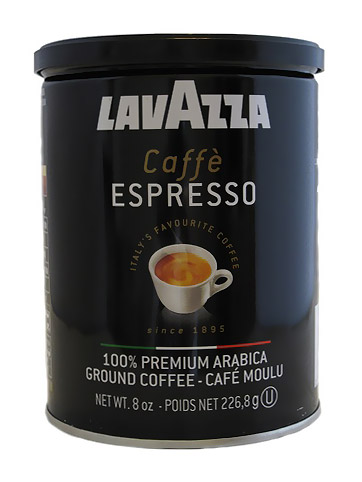

Coffee have always been in part of human’s life and been discover way back in history. At first human only use them as food. Coffee have develop fast in to many regions and finally around the world as record by Columba university. “Coffee was known in 15th-century Arabia; from there it spread to Egypt and Turkey, overcoming religious and political opposition to become popular among Arabs. At first proscribed by Italian churchmen as a heathen's drink, it was approved by Pope Clement VIII, and by the mid-17th cent. Coffee had reached most of Europe. Introduced in North America c.1668, coffee became a favorite American beverage” (Columba University Press). Although the spread of coffee may have raise many issue towards religious, heath or political but coffee have succeed in term of popularity. This spread causes coffee to grow and been develop differently base upon the different regions they are in.
Before getting in dept with the type of coffee that are grow in different countries it is better to know about the two basic most popular coffee beans that are used. “While there are more than 25 major species of coffee, the two that are most familiar are Arabica and Canephora” (Coffee talk, 68).Arabica are use to make nearly 70 percent of the world coffee production today. They are mostly growing in high altitudes in area that receive a lot of rainfalls. The beans are large and because they are harder to grow and harvest they are more expensive. Robusta beans are grow at lower altitudes, they contains more caffeine than Arabica coffee, smaller and bitter taste.
The different types of roast in different countries there are a lot of different types of coffee in many regions but this are one of the most famous and is a large production of coffee.
American roast: They are the most regular type of roast today; the beans are being roasted in medium level. Resulting in medium flavor, not too light or too heavy. They also divided into many different regions and result in also different taste of coffee.
Brazilian coffees: grown in lowland the quality then isn’t consider to be as good as those grown on high land. Brazilian are well known for being the largest producer for coffee.
Jamaican Coffee: The coffee from Jamaican are bitter, they have the most well known world’s most expensive coffee named Blue Mountains. It is very smooth, sweet and aromatic.
Costa Rica coffee: it is very famous in Europe. A fruity flavor coffee, well known for drinking with breakfast.
French roast and dark French roast: Very roasted beans, Produces a strong coffee.
Italian roast: Are brown-black, they are strong, mostly use for making espresso.
It can sometimes be daunting walking into a coffe house and seeing the long list of coffee varieties and drinks on the menu. What’s the difference between a latte and an Au lait? How does a cappuccino differ from an Americano? We’ll try to make it all clear for you below:
Americano: A single shot of espresso with about 7 ounces of hot water added to the mix. The name for this coffee drink stemmed from an insult to ‘uncouth’ Americans who weren’t up to drinking full espressos.
A Shot in the Dark: See ‘Hammerhead’.
Black coffee: A drip brew, percolated or French press style coffee served straight, with no milk.
Cafe au Lait: Similar to Caffe Latte, except that an au lait is made with brewed coffee instead of espresso. Additionally, the ratio of milk to coffee is 1:1, making for a much less intense taste.
Cafe Breva: A cappuccino made with half and half milk, instead of whole milk. The theory is that the mix gives a richer, creamier flavor. You should be aware, before trying this for yourself, that half and half is much harder to foam.
Caffe Latte: Essentially, a single shot of espresso in steamed (not frothed) milk. The ratio of milk to coffee should be about 3:1, but you should be aware that latte in Italian means ‘milk’, so be careful ordering one when in Rome.
Cafe Macchiato: A shot of espresso with steamed milk added. The ratio of coffee to milk is approximately 4:1.
Cappuccino: Usually equal parts espresso, steamed milk, and frothed milk, often with cinnamon or flaked chocolate sprinkled on top. Some coffee shops will add more milk than that so that the customer will get a bigger drink out of the deal, but that makes the coffee itself far weaker.
Double, or Double Shot: Just as it sounds, this is two shots of espresso mixed in with the regular amount of additional ingredients. So, for example, if you were going to make a double hammerhead, you would put two shots of espresso into a coffee cup, and fill it with the drip blend, rather than the usual single espresso shot.
Dry Cappuccino: A regular cappuccino, only with a smaller amount of foam, and no steamed milk at all.
Below, we have provided some examples on how to make Lattes, Cappuccinos, Espressos, and Mochas. Enjoy!
How to make:
Lattes
A caffe latte, literally "coffee with milk," is espresso with both a generous amount of steamed milk and milk foam. Although you are unlikely to see caffe lattes offered in Italy, except perhaps at breakfast, they have become quite popular in the United States, particularly those flavored with sweet syrups.
Instructions
1. Make a shot of espresso equaling between 1 and 1 1/2 oz. (See "How to Make an Espresso" in the Related eHows section.)
2. Steam 10 oz. milk.
3. Point your steam wand towards the bottom of your stainless steel pitcher to steam your milk. To create froth, raise the tip just below the surface of the pitcher.
4. Pour hot milk in a 12-oz. glass until 3/4 full.
5. Pour the espresso shot into the steamed milk.
5. Dust with ground chocolate, cinnamon or nutmeg
Cappuccinos
Cappuccino is a mixture of espresso, a little steamed milk and a little milk foam. The milk/foam ratio is up to you what you enjoy most. Some like a thick layer of foam while others just want foam as a garnish on top. Mix as you please
Instructions
1. Make a 1 1/2 oz. espresso, leaving enough water in the espresso machine to steam some milk. (See "How to Make an Espresso" in the Related eHows section.)
2. Put espresso in a 5-oz. or larger cup so that you have room for the milk.
3. Set espresso machine to steam.
4. Fill a stainless-steel carafe with 3 oz. cold milk and insert the steam nozzle.
5. Place nozzle halfway down in milk and leave it in milk for 45 to 60 seconds, or until the milk is hot and there's enough foam for your preference.
6. Add 1 1/2 oz. steamed milk to the cup of espresso.
7. Spoon some foamed milk onto the top.
8. If you like, sprinkle with ground chocolate, cinnamon or nutmeg.
Espresso
Espresso is an extraction of coffee that comes from a special type of coffee machine. It usually depends on the type of machine use to make it but the basic steps are.
Pour cold water into the machine’s water chamber. Then put in shot of espresso as you prefer mostly between 1-4 ounce.
Place the coffee basket into the filter and pack the ground coffee.
Brush off any grounds remaining and place it in the machine.
Mostly machine will comes with carafe but if not use cups, place them under the spout and run the machine. It will heat up and push the water through coffee ground.
The coffee will then flow into the cup, keep it until it turns almost white in color then remove immediately.
Mocha
Mocha is basically an espresso added with steamed milk, cocoa or chocolate syrup. Sometimes with whipped cream or foamed milk.
Instruction
Locate chocolate syrup or milks in the bottom of tall thick glass.
Prepare one shot of espresso.
Steam your milk
Add 3 of out 4 of your prepared milk into the glass and stir.
Add espresso and stir them.
Add the left over steam milk
Place whipped cream on top or do any extra shavings.
Espresso coffee is an Italian invention that uses a pump-driven machine to force near-boiling water through finely ground coffee to extract its full flavour. For best results, the water is forced through with at least 15 bars of pump pressure for 20 to 30 seconds (nominally 25 seconds) to produce 30 ml of liquid. The resulting "shot" of liquid is thick and strong, and contains a dark oily layer on top known as the crema. Espresso coffee drunk "as is" is often referred to as a short black. Hot frothed milk can also be added to an espresso shot in various proportions to make other popular café style coffee drinks including macchiato, cappuccino, flat white, and latte.
To make coffee house quality espresso coffee at home, you'll need to by a good quality domestic espresso machine. These start from a couple of hundred dollars and up. It's not necessary to get one with fancy features. So long as it produces at least 15 bars of pump pressure, the overall quality of the coffee will be the same. Do not buy the cheap ones that operate from steam pressure rather than using a pump to force the water through the coffee as these machines don't make a proper espresso shot.
Type of coffee
The perfect espresso coffee is made from freshly-ground roasted coffee beans. This means you'll also need to invest in a good quality grinder and use whole beans. Alternatively, you can buy ready ground coffee. Ground coffee should be stored in an airtight container and refrigerated. Coffee stored in this way will last up to a few weeks but the flavour will slowly deteriorate.
The coffee beans should be finely and evenly ground to make a good espresso coffee. However, if it's too fine it will clog the filter and won't produce 30 ml of coffee in the requisite 25 seconds. If the coffee is too course the water will pour through too quickly, overfilling the cup, and won't produce a decent crema. You cannot use instant coffee with an espresso machine.
The water
It’s also important to start with fresh clean water. Water that has a stale or plastic taste will affect the flavour of the coffee. This also goes for the coffee making equipment. Make sure the filter, filter holder and group are clean and free of old coffee residue.
Making the coffee
Making the perfect espresso coffee at home takes a lot of initial experimentation as there are many variables that can affect the process including the type of coffee, the grind, and how tightly and evenly the coffee is packed into the filter. The general procedure for making an espresso coffee is outlined below:
» Turn on the espresso machine and allow it to preheat. Make sure it has an adequate supply of fresh cold water.
» Preheat the coffee cups, filter, and filter holder.
» Grind the coffee if using whole beans.
» Place the filter inside the filter holder and add one scoop of coffee (about 7 grams).
» Level the coffee flat with your finger. Now lightly press on the coffee with the tamper. Remove the tamper and allow any grinds on the side to fall back on top of the coffee. Tamp again with a little more pressure while slowly rotating the tamper so that the coffee is evenly packed with a smooth finish.
» Tightly lock the filter handle into the machine and quickly place a warm cup under it.
» Set the machine to force the water through the coffee for 25 seconds (the machine should automatically control the temperature of the water to just below boiling point). The coffee should drip out slowly, appear reddish brown in colour, and produce 30 ml of coffee with a thick crema.
» Stop the water flow (if the machine is manually controlled) and drink the coffee immediately.
To make a long black, simply add hot water to the espresso shot.
Troubleshooting
Some general troubleshooting tips are given below:
Symptom Possible causes
More than 30 ml of coffee in the cup.
Grind is too course
Insufficient coffee used
Coffee not packed tightly or evenly enough
Extraction time too long
Less than 30 ml of coffee in the cup.
Grind is too fine
Too much coffee used
Coffee packed too tightly
Extraction time too short
Crema is too thin or light in colour.
Grind is too course
Grind not even (grains not the same size)
Insufficient coffee used
Coffee not packed tightly or evenly enough
Machine not warmed up
Coffee tastes bitter.
Extraction time too long
Coffee type - try another brand
Frothing milk
Most espresso machines will also produce steam for heating and frothing milk. If your machine is an inexpensive type, draw the espresso shot first before switching to the steamer mode. Place a small saucer over the espresso shot to keep it warm while you froth the milk. When the steamer is ready, expel a little steam first to remove any water. Then position the steam nozzle to the bottom of a jug of cold milk and open the steam valve. Slowly lower the jug to draw the nozzle closer to the surface of the milk so that it can draw in a little air. If you position it right, a whirlpool motion will be happening in the milk and you will get an even mix of bubbles throughout. The frothed milk should be about 70-75° C. Do not scorch the milk or allow it to boil! Turn off the steamer and prime the unit if necessary for your machine. Bang the milk jug down on a flat surface to break up any large bubbles, and swirl the jug around a few times (or mix the frothed milk with a spoon).
Add the milk slowly to the espresso shot to make the desired coffee drink in the appropriate cup or glass. To make a macchiato, simply "stain" the coffee with a little of the frothed milk. Flat white and latte coffees contain about two thirds frothed milk. Cappuccino is made like a flat white but contains additional froth on top and a sprinkle of powdered drinking chocolate.















American roast: They are the most regular type of roast today; the beans are being roasted in medium level. Resulting in medium flavor, not too light or too heavy. They also divided into many different regions and result in also different taste of coffee.
Brazilian coffees: grown in lowland the quality then isn’t consider to be as good as those grown on high land. Brazilian are well known for being the largest producer for coffee.
Jamaican Coffee: The coffee from Jamaican are bitter, they have the most well known world’s most expensive coffee named Blue Mountains. It is very smooth, sweet and aromatic.
Costa Rica coffee: it is very famous in Europe. A fruity flavor coffee, well known for drinking with breakfast.














































Coffee have always been in part of human’s life and been discover way back in history. At first human only use them as food. Coffee have develop fast in to many regions and finally around the world as record by Columba university. “Coffee was known in 15th-century Arabia; from there it spread to Egypt and Turkey, overcoming religious and political opposition to become popular among Arabs. At first proscribed by Italian churchmen as a heathen's drink, it was approved by Pope Clement VIII, and by the mid-17th cent. Coffee had reached most of Europe. Introduced in North America c.1668, coffee became a favorite American beverage” (Columba University Press). Although the spread of coffee may have raise many issue towards religious, heath or political but coffee have succeed in term of popularity. This spread causes coffee to grow and been develop differently base upon the different regions they are in.
Before getting in dept with the type of coffee that are grow in different countries it is better to know about the two basic most popular coffee beans that are used. “While there are more than 25 major species of coffee, the two that are most familiar are Arabica and Canephora” (Coffee talk, 68).Arabica are use to make nearly 70 percent of the world coffee production today. They are mostly growing in high altitudes in area that receive a lot of rainfalls. The beans are large and because they are harder to grow and harvest they are more expensive. Robusta beans are grow at lower altitudes, they contains more caffeine than Arabica coffee, smaller and bitter taste.
The different types of roast in different countries there are a lot of different types of coffee in many regions but this are one of the most famous and is a large production of coffee.
American roast: They are the most regular type of roast today; the beans are being roasted in medium level. Resulting in medium flavor, not too light or too heavy. They also divided into many different regions and result in also different taste of coffee.
Brazilian coffees: grown in lowland the quality then isn’t consider to be as good as those grown on high land. Brazilian are well known for being the largest producer for coffee.
Jamaican Coffee: The coffee from Jamaican are bitter, they have the most well known world’s most expensive coffee named Blue Mountains. It is very smooth, sweet and aromatic.
Costa Rica coffee: it is very famous in Europe. A fruity flavor coffee, well known for drinking with breakfast.
French roast and dark French roast: Very roasted beans, Produces a strong coffee.
Italian roast: Are brown-black, they are strong, mostly use for making espresso.
It can sometimes be daunting walking into a coffe house and seeing the long list of coffee varieties and drinks on the menu. What’s the difference between a latte and an Au lait? How does a cappuccino differ from an Americano? We’ll try to make it all clear for you below:
Americano: A single shot of espresso with about 7 ounces of hot water added to the mix. The name for this coffee drink stemmed from an insult to ‘uncouth’ Americans who weren’t up to drinking full espressos.
A Shot in the Dark: See ‘Hammerhead’.
Black coffee: A drip brew, percolated or French press style coffee served straight, with no milk.
Cafe au Lait: Similar to Caffe Latte, except that an au lait is made with brewed coffee instead of espresso. Additionally, the ratio of milk to coffee is 1:1, making for a much less intense taste.
Cafe Breva: A cappuccino made with half and half milk, instead of whole milk. The theory is that the mix gives a richer, creamier flavor. You should be aware, before trying this for yourself, that half and half is much harder to foam.
Caffe Latte: Essentially, a single shot of espresso in steamed (not frothed) milk. The ratio of milk to coffee should be about 3:1, but you should be aware that latte in Italian means ‘milk’, so be careful ordering one when in Rome.
Cafe Macchiato: A shot of espresso with steamed milk added. The ratio of coffee to milk is approximately 4:1.
Cappuccino: Usually equal parts espresso, steamed milk, and frothed milk, often with cinnamon or flaked chocolate sprinkled on top. Some coffee shops will add more milk than that so that the customer will get a bigger drink out of the deal, but that makes the coffee itself far weaker.
Double, or Double Shot: Just as it sounds, this is two shots of espresso mixed in with the regular amount of additional ingredients. So, for example, if you were going to make a double hammerhead, you would put two shots of espresso into a coffee cup, and fill it with the drip blend, rather than the usual single espresso shot.
Dry Cappuccino: A regular cappuccino, only with a smaller amount of foam, and no steamed milk at all.
Below, we have provided some examples on how to make Lattes, Cappuccinos, Espressos, and Mochas. Enjoy!
How to make:
Lattes
A caffe latte, literally "coffee with milk," is espresso with both a generous amount of steamed milk and milk foam. Although you are unlikely to see caffe lattes offered in Italy, except perhaps at breakfast, they have become quite popular in the United States, particularly those flavored with sweet syrups.
Instructions
1. Make a shot of espresso equaling between 1 and 1 1/2 oz. (See "How to Make an Espresso" in the Related eHows section.)
2. Steam 10 oz. milk.
3. Point your steam wand towards the bottom of your stainless steel pitcher to steam your milk. To create froth, raise the tip just below the surface of the pitcher.
4. Pour hot milk in a 12-oz. glass until 3/4 full.
5. Pour the espresso shot into the steamed milk.
5. Dust with ground chocolate, cinnamon or nutmeg
Cappuccinos
Cappuccino is a mixture of espresso, a little steamed milk and a little milk foam. The milk/foam ratio is up to you what you enjoy most. Some like a thick layer of foam while others just want foam as a garnish on top. Mix as you please
Instructions
1. Make a 1 1/2 oz. espresso, leaving enough water in the espresso machine to steam some milk. (See "How to Make an Espresso" in the Related eHows section.)
2. Put espresso in a 5-oz. or larger cup so that you have room for the milk.
3. Set espresso machine to steam.
4. Fill a stainless-steel carafe with 3 oz. cold milk and insert the steam nozzle.
5. Place nozzle halfway down in milk and leave it in milk for 45 to 60 seconds, or until the milk is hot and there's enough foam for your preference.
6. Add 1 1/2 oz. steamed milk to the cup of espresso.
7. Spoon some foamed milk onto the top.
8. If you like, sprinkle with ground chocolate, cinnamon or nutmeg.
Espresso
Espresso is an extraction of coffee that comes from a special type of coffee machine. It usually depends on the type of machine use to make it but the basic steps are.
Pour cold water into the machine’s water chamber. Then put in shot of espresso as you prefer mostly between 1-4 ounce.
Place the coffee basket into the filter and pack the ground coffee.
Brush off any grounds remaining and place it in the machine.
Mostly machine will comes with carafe but if not use cups, place them under the spout and run the machine. It will heat up and push the water through coffee ground.
The coffee will then flow into the cup, keep it until it turns almost white in color then remove immediately.
Mocha
Mocha is basically an espresso added with steamed milk, cocoa or chocolate syrup. Sometimes with whipped cream or foamed milk.
Instruction
Locate chocolate syrup or milks in the bottom of tall thick glass.
Prepare one shot of espresso.
Steam your milk
Add 3 of out 4 of your prepared milk into the glass and stir.
Add espresso and stir them.
Add the left over steam milk
Place whipped cream on top or do any extra shavings.
Labels:
cofe espresso
Subscribe to:
Comments (Atom)


